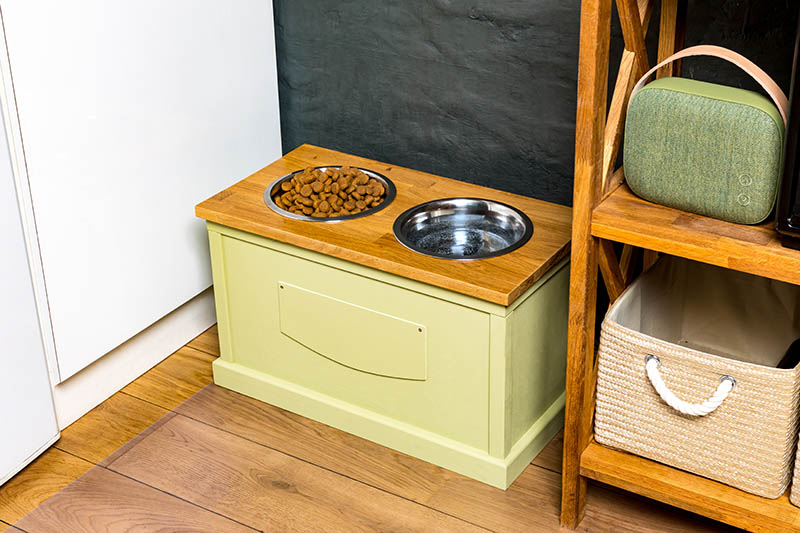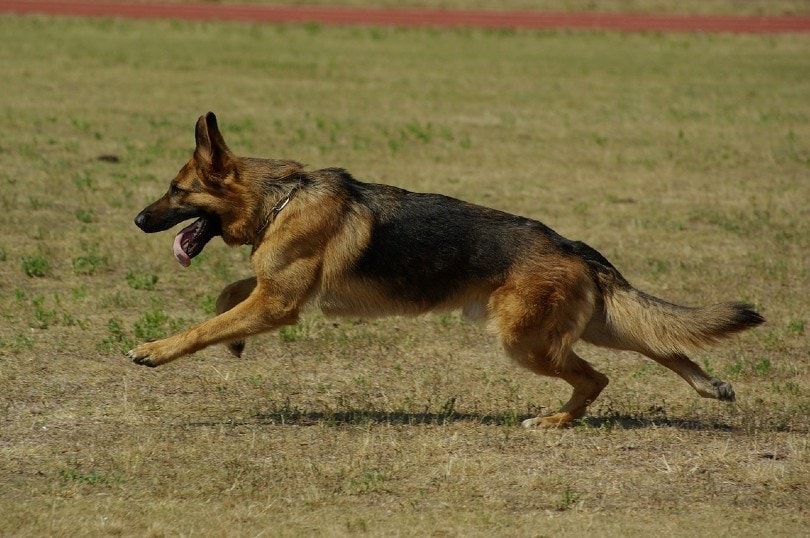20 Dog-Safe House Plants for Your Home (With Pictures)

Updated on
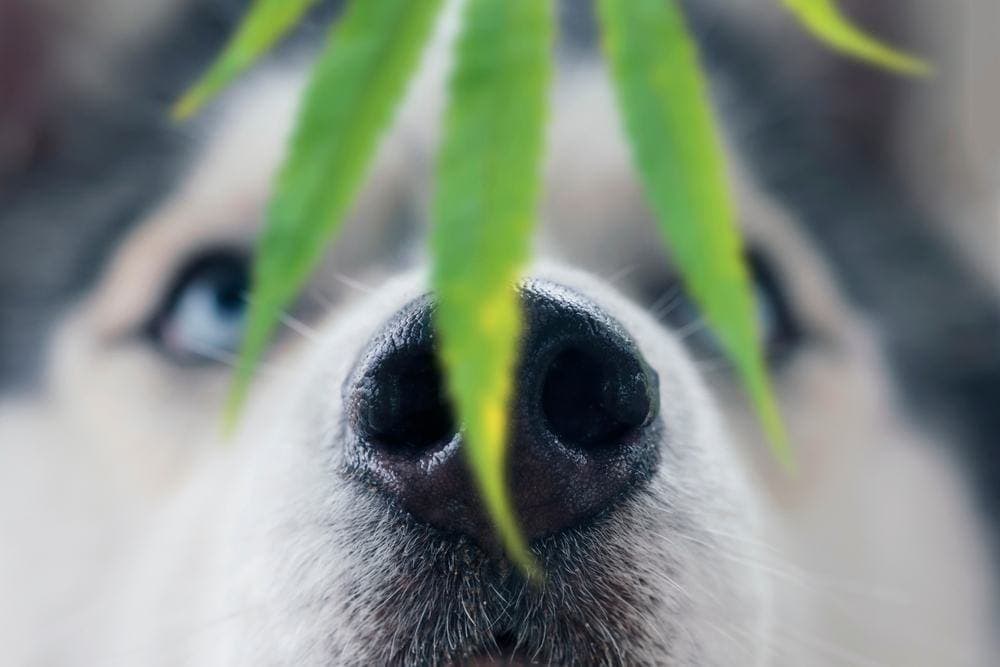
All pet owners can agree that cats and dogs can be a real pain sometimes. When we want to have lush, beautiful house plants alongside our pets, they can get destroyed or damaged easily. And there are plenty of house plants that can be very toxic to dogs or cats if they eat them.
If you’re trying to look out for your furry one’s health and they won’t stop chewing on your plants, here are some selections that are totally pet-safe and lovely. And just remember, these are only 20 plants—there are plenty of others, too. Just make sure to do your homework before bringing a new plant home.
The 20 Best Houseplants for Dogs
1. Boston Fern
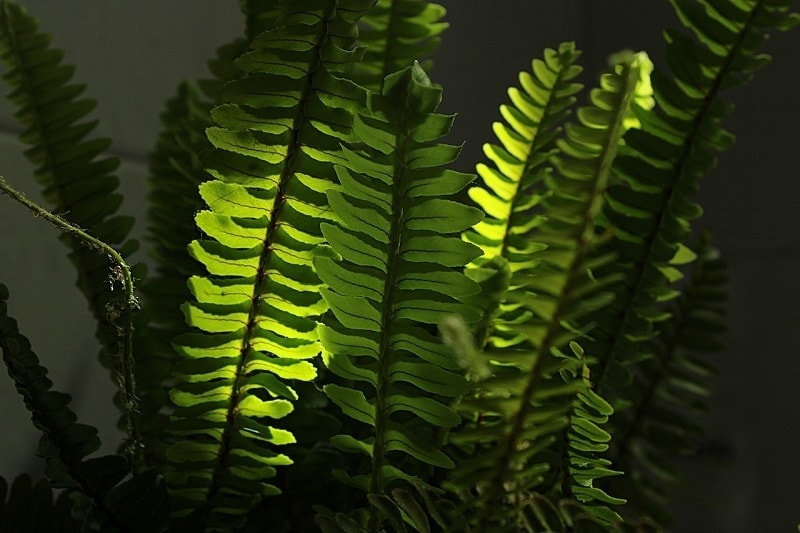
Boston ferns have a reputation for being extraordinarily hearty and easy to grow. This mild, easy-to-grow plant is perfect for so many homes. You can have them growing comfortably in a hanging basket or set them in a lifted planter.
These plants are lush, full, and completely safe for your furry pals. They even fare very well outdoors, as they are native to cold, harsh winter climates. So, this is a perfect plant for a screened-in porch, too.
- Appearance: Bushy, hanging, full, green
- Light Requirements: Moderate to low indirect sunlight
- Difficulty: Easy
2. African Violet
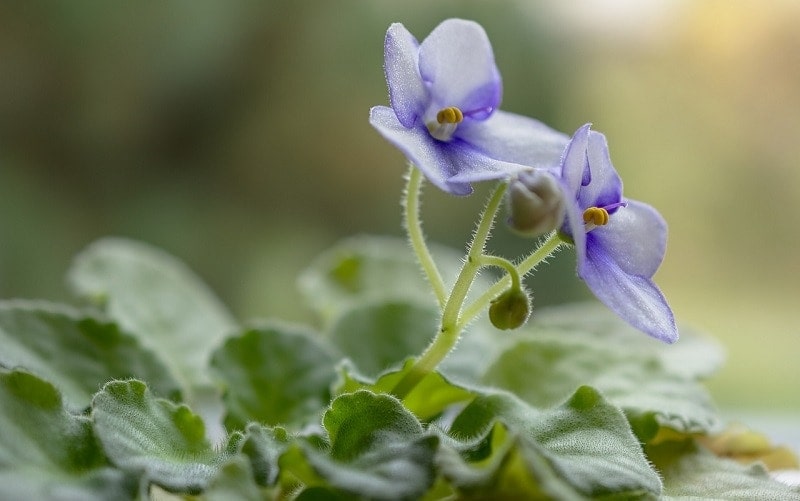
The gorgeous African violet is a flowering houseplant that develops rich purple blooms after 6-9 months. They tend to grow out rather than tall. They look absolutely charming in a window or as a centerpiece.
These non-toxic plants are easy to keep. They aren’t finicky or fragile at all. So, they would make a smart pick even if it’s hard for you to keep most plants alive.
- Appearance: Dark broad leaves, purple flowers
- Light Requirements: Bright, indirect light
- Difficulty: Easy
3. Swedish Ivy

Contrary to its name, Swedish ivy isn’t really ivy at all. Instead, it has beautiful sprawling foliage with shiny, scalloped leaves.
This plant would look lovely in a hanging basket or dancing across a doorway. Because of their creative growing ability, you easily keep them up high, away from those who’d like to eat them.
- Appearance: Vining, hanging, glossy
- Light Requirements: Bright, indirect
- Difficulty: Easy
4. Areca Palm

If you love floor-sitting plants that have a presence, the Areca palm is a gorgeous selection. This species of palm tree grows massive, exotic upward leaves. They have a bamboo-like texture, making them super hardy and robust.
These plants are generally easy to grow, but be careful not to overwater. They are prone to root rot.
- Appearance: Large leaves, tall growth, thick stalks
- Light Requirements: Filtered sunlight, full sun
- Difficulty: Moderate
5. Spider Plant

As the name implies, spider plants have expanding leaves that mimic a spider’s legs. This non-toxic plant makes a pleasant addition to practically any household. They do well in those hanging baskets or in a standard potting container.
These plants are pretty resilient so that they can repair from damage. If your animal gets ahold of a few leaves, neither one should suffer for it.
- Appearance: Sprawling leaves, non-flowering
- Light Requirements: Bright indirect sunlight
- Difficulty: Easy
6. Ponytail Palm

The quirky ponytail palm tree is an elementary house plant that doesn’t harm your pets at all. It has a substantial base, so the trunk can store water for long periods. This plant is an excellent pick for someone who forgets to water houseplants on a regular schedule.
These plants regrow their leaf sprawls very easily, so if you have a few bitten off, you can bet they’ll regrow beautifully in no time.
- Appearance: Thick base, winding leaves, green color
- Light Requirements: Bright sun
- Difficulty: Easy
7. Friendship Plant

Friendship plants are fascinating and non-toxic, making them safe to add to your home. The lining of the plants has intricate designs on the leaves. You can see every vein and each piece of the pattern is a different color. Their leaves have a fuzzy texture and grow in a quilted fashion.
It is a tropical plant, so it requires warm temperatures. This plant wouldn’t do well next to a cold window or air conditioner.
- Appearance: Crinkly veined leaves
- Light Requirements: Bright non-direct sunlight
- Difficulty: Easy
8. Gerbera Daisy
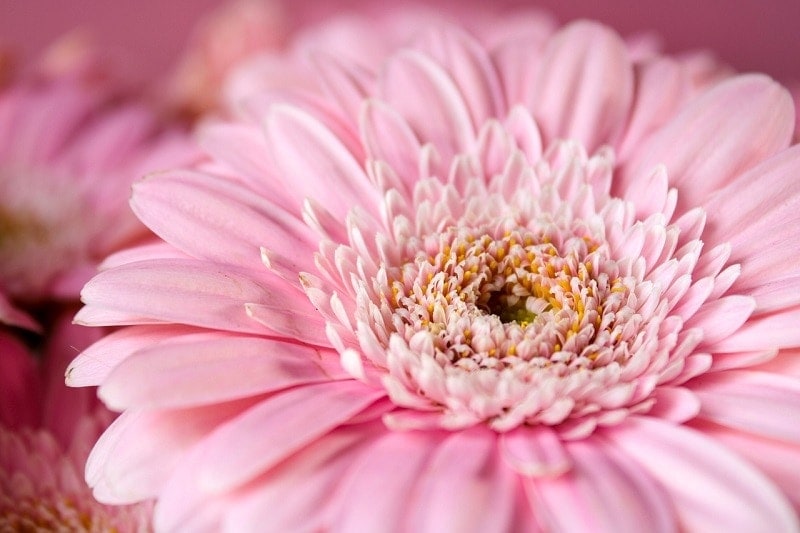
The adorable gerbera daisy is a terrific houseplant that can toss some color into your home. This genus of daisy is incredibly easy to grow indoors and totally safe for any fury pals around. You can buy these flowers in various shades of yellow, pink, orange, red, lavender, and white.
You can grow these beauties directly from seed, or you can buy one that already has a head start.
- Appearance: Tall stalks, colorful blooms
- Light Requirements: Bright, indirect sunlight
- Difficulty: Moderate
9. Orchid
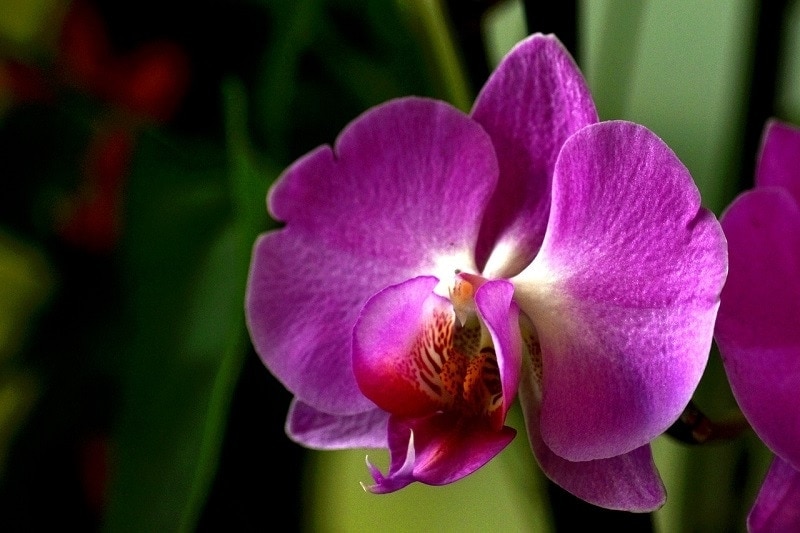
Orchids are absolutely stunning flowering plants that are completely safe in homes with pets. They are a bit challenging to handle if you’re unfamiliar with houseplant care, but they can be very rewarding. If you want your orchid plant to grow upright, you’ll need to stabilize the stalks.
You can also let an orchid vine across an anchored surface. You can buy them in many varieties, as the species is extensive.
- Appearance: Vining, seasonal blooms, thick long leaves
- Light Requirements: Bright, indirect sunlight
- Difficulty: Difficult
10. Haworthia
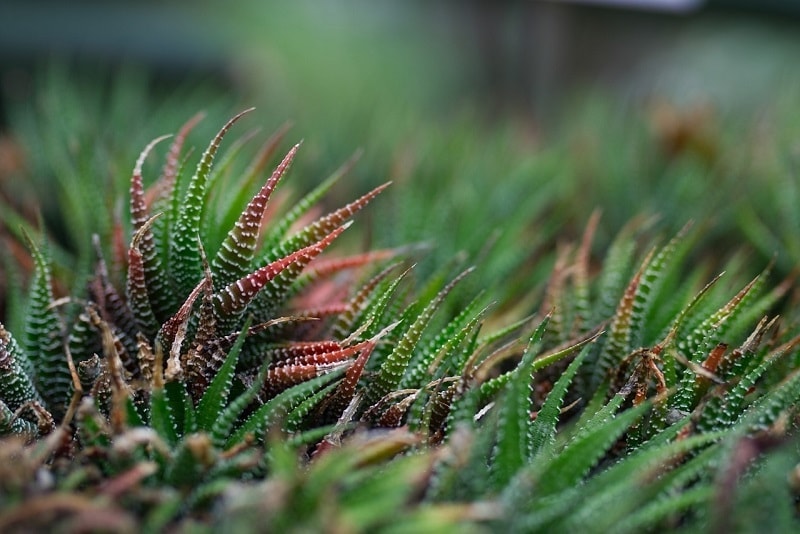
Haworthia is an intriguing species of succulent, growing bumpy, thick, soft, goo-filled stalks. It might not sound pleasing when you describe it like that, but just look at how beautiful they are. They have a spiky, sassy look.
In addition to being pet-friendly, these plants are also closely related to aloe. It has some of the same healing properties, like soothing cuts, burns, and rashes.
- Appearance: Fleshy leaves, lined patterns
- Light Requirements: Bright, indirect sunlight
- Difficulty: Easy
11. Cat Grass
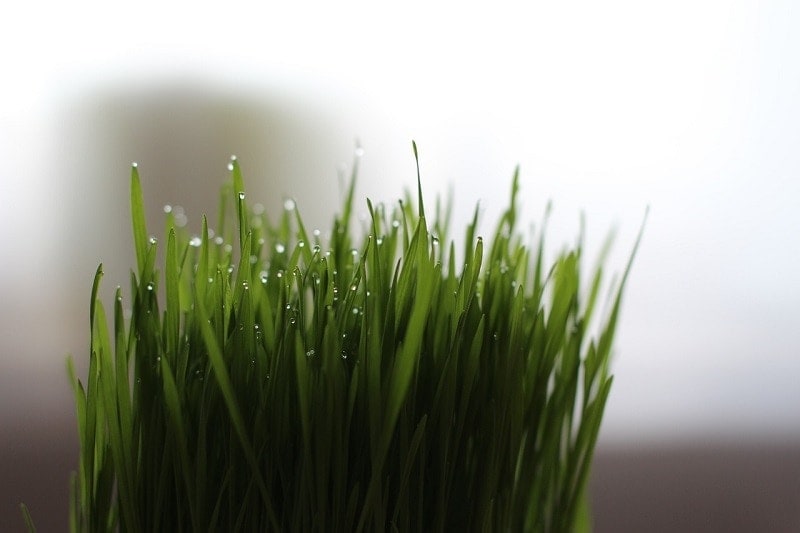
Cat grass is specifically designed for cats or dogs to munch on. Of course, greens aren’t a natural part of the cat or dog diet, but that doesn’t stop them from feasting on them from time to time.
If you’re having an issue with your pets eating your houseplants, try this alternate. They can feast, and your other houseplants can catch a break.
- Appearance: Common grass
- Light Requirements: Bright sunlight
- Difficulty: Easy
12. Hoya Obovata

The hoya obovata is a gorgeous houseplant that can develop blooms after a few years. This charming little plant will add character to your existing garden. The Hoya has large, deep green oval leaves, creating a pleasing aesthetic.
These plants are relatively easy to grow and are totally harmless to your pets. The hoya obovata is sensitive to overwatering, so be mindful of when they need a drink.
- Appearance: Flowering, succulent-like oval leaves
- Light Requirements: Low to bright indirect sunlight
- Difficulty: Easy
13. Polka Dot Plant
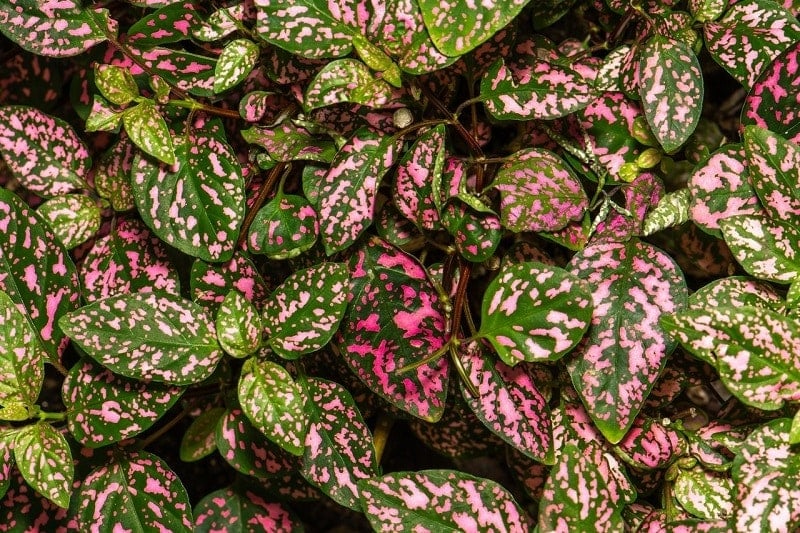
The springy polka dot plant is full of variety and color. These plants do great in window sills. Not only do they add vibrance, but they just love the bright light. Leaves can crisp in direct sun, so be mindful of giving them lots of indirect light.
Don’t let their bright colors fool you. These gorgeous plants are non-toxic to critters.
- Appearance: Multi-colored leaves
- Light Requirements: Moderate indirect sunlight
- Difficulty: Easy
14. Banana Plant

The tropical banana plant is a pet-safe selection that is sizable and easy to grow. They might start out small, but they soon develop massive, firm leaves that bow downward.
These plants require a humid, warm environment. So, always make sure to give them lots of sun in the warm months and keep them away from windows or drafty places in the winter.
- Appearance: Solid base, long, sturdy, bowing leaves
- Light Requirements: Bright sunlight
- Difficulty: Moderate
15. Venus Flytrap
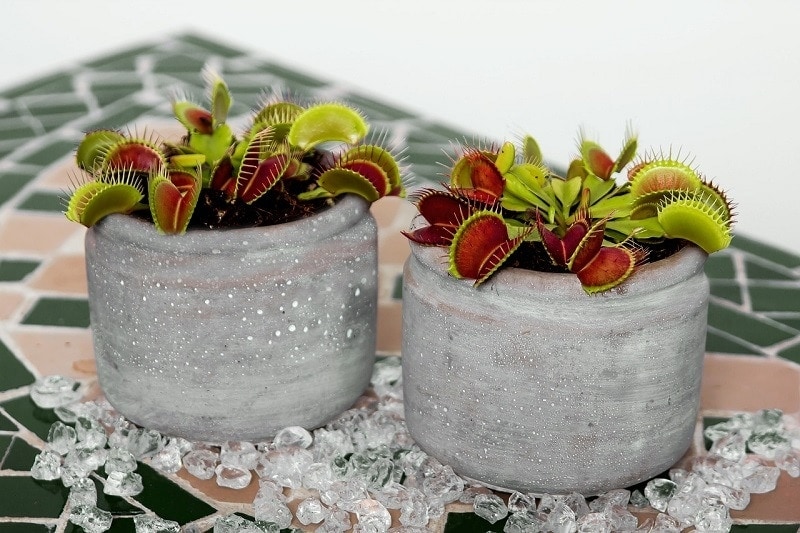
A Venus flytrap might be one of the coolest houseplants you can own. It’s an entirely carnivorous plant, consuming small insects for growth. This plant might seem vicious, but it is totally safe for your pets—but we can’t say the same for a fly.
On the downside, Venus flytraps are insanely tricky to keep alive. These plants are tropical and require particular living conditions to thrive.
- Appearance: Small growths, pod-like mouths, fine leaf spikes
- Light Requirements: Bright light
- Difficulty: Difficult
16. Calathea

The intriguing Calathea is a whimsical pet-friendly plant you can add to your home. One super cool thing about these plants is that they move their leaves up at night through a process called nyctinasty. So, their leaves change position every day.
In addition to having a superpower, these plants are also beautifully colorful. To avoid fungal leaf infections, only give these plants room-temperature distilled water.
- Appearance: Broad leaves, nightly rotating plant
- Light Requirements: Bright indirect light
- Difficulty: Easy
17. Mosaic Plant

The non-toxic mosaic plant gets its name from the lovely, cracked-glass look of its leaves. The leaves are dark green with bright white or red veins. This plant quickly spreads out, but it doesn’t get very tall—which is ideal for smaller potting planters.
While this plant is slow to grow, it can live up to 10 years. So, you can have a long and lustrous plant life—with your pets’ permission, of course.
- Appearance: Short-statured, veiny leaves
- Light Requirements: Indirect sunlight
- Difficulty: Moderate
18. Bromeliad
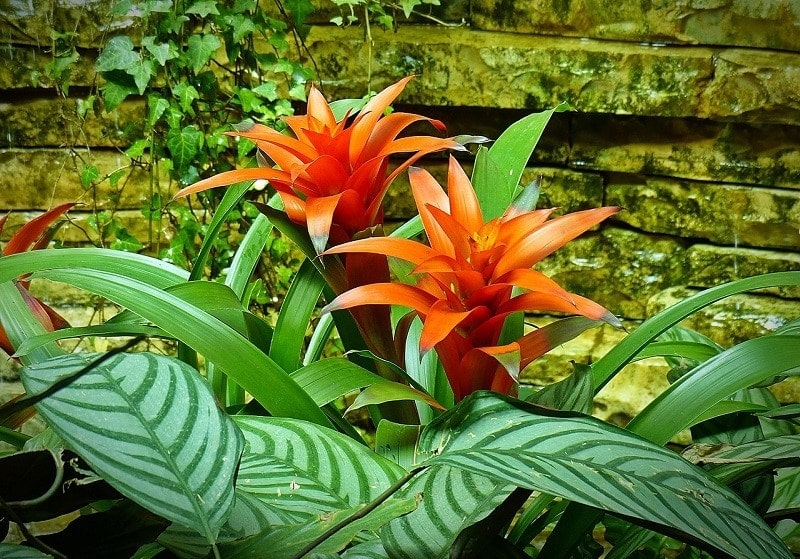
The exotic-looking Bromeliad plant is a real eye-catcher that is entirely non-toxic, despite its vibrant appearance. These plants might have a thick stalk, but they don’t require deep soil—working best in a shallow planting pot.
These plants are pretty easygoing, not needing any special accommodations to thrive. They only need bright sunlight to grow—so the window sill is their friend.
- Appearance: Spiky, downward blooms and leaves, multi-colored
- Light Requirements: Bright sunlight
- Difficulty: Easy
19. Peperomia
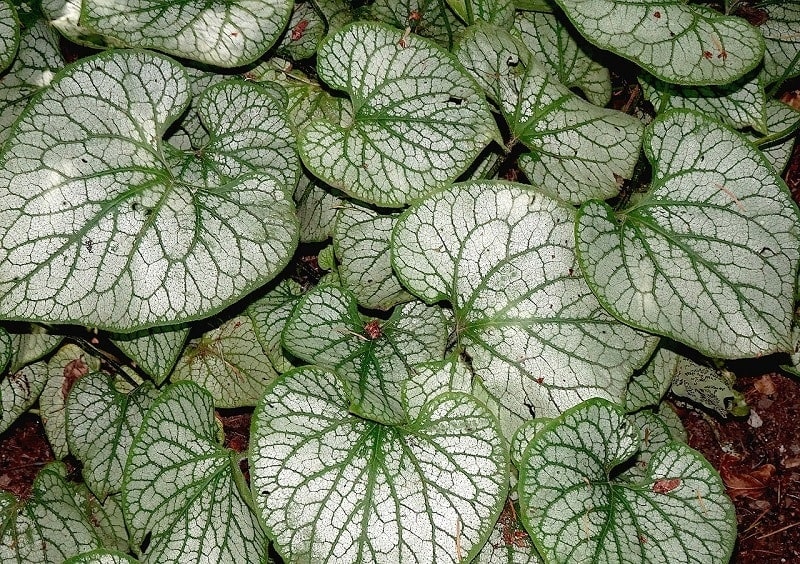
Of the 1,000 species of peperomia plant, all are completely safe for cats and dogs. It is a resilient and durable little plant. Its leaves have a unique pattern, combining hues of green. It comes in several leaf variations, so you can pick your favorite of all—or maybe a few.
Peperomias are terrific for both inexperienced and seasoned plant owners. These hardy plants will grow with minimal effort.
- Appearance: Green shades, ornamental leaves
- Light Requirements: Bright, indirect sunlight
- Difficulty: Easy
20. Burro’s Tail

The extraordinarily quirky burro’s tail is a succulent perennial that looks exactly like its name suggests. These succulents drape downward with heavy, dropping leaves extending from the vine. Because of the way they grow, they work best in hanging pots.
These plants also work very well in extremely drought climates. So, it’s okay if you forget a watering day here and there.
- Appearance: Green to gray, thick leaves, dangling stems
- Light Requirements: Bright sunlight
- Difficulty: Easy
Ways to Keep Pets Out of Your Plants
Even when you have pet-safe plants in your home, that doesn’t mean you want your cat or dog snacking on them. You might not be able to keep the plants completely out of the line of fire, but there are some simple steps you can take to protect them.
- Try to use the hanging method
- Use inaccessible shelving
- Make the area undesirable for your pets
- Designate one closed room to your plants
Related Read: 8 Ways to Stop a Dog From Digging Up Potted Plants (Easy & Humane)
 Highly Poisonous Houseplants for Pets
Highly Poisonous Houseplants for Pets
If you have pets, here are a few plants you should avoid at all costs:
- Lilies
- Aloe Vera
- Dumb Cane
- Devil’s Ivy
- Jade
- Poisonetta
- Ficus
Signs
Some signs will vary depending on the type of plant your pet consumed. But in general, if your dog ate a toxic plant, they will show these general symptoms:
- Weakness
- Nausea
- Diarrhea
- Vomiting
- Irregular heartbeat
- Salivating
It’s important to react promptly if your pet exhibits any of those behaviors suddenly.

What to Do If Your Dog Ate a Poisonous Plant
If your dog ate a plant, it’s time to get them to the vet. But before you do, try to pinpoint exactly what plant it was. It will help the vet determine how severe the poisoning could be and how to proceed.
Ensure your animal is breathing and conscious, then get them to an emergency veterinary facility with speed. The quicker you act, the more likely it is that they will recover.
You can also contact Poison Control through the ASPCA.
Final Thoughts
There are so many completely pet-safe plant options. You probably have added quite a few plants to your list of upcoming purchases. House plants can be so beneficial to have in your home. They’re gorgeous, refreshing, and aesthetically pleasing in virtually any setting. Even though there may be a little struggle, your pets and plants can coexist peacefully.
If you have questions about plants that aren’t on this list, just make sure to research their safety before you buy.
See also:
- 15 Plants Toxic to Dogs: Vet Reviewed Facts & Symptoms
- Are Snake Plants Toxic to Dogs? Vet Reviewed Risks & Safe Alternatives
- My Dog Ate Rat Poison! Here’s What to Do (Our Vet Answers)
Featured Image by Anton Watman, Shutterstock


 Highly Poisonous Houseplants for Pets
Highly Poisonous Houseplants for Pets